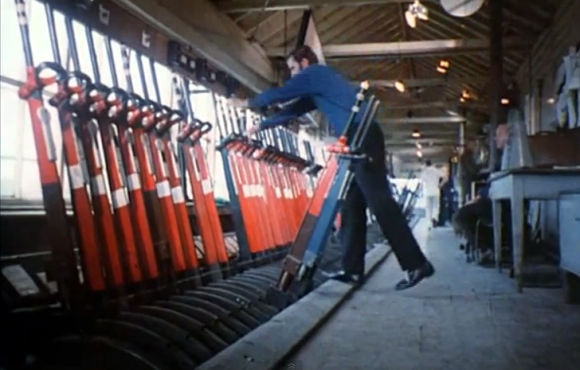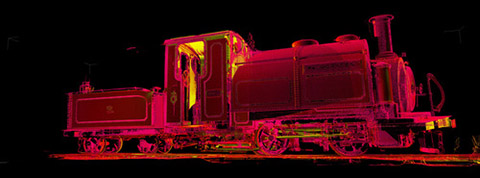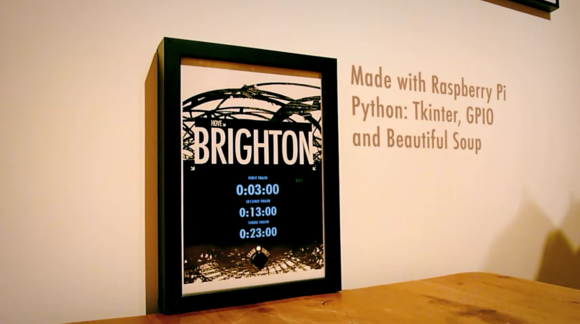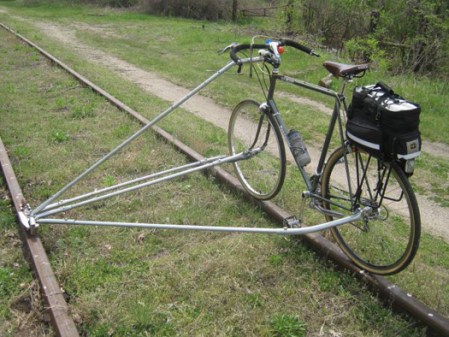Look closely above and you’ll see there’s a section of track missing. There are actually two, a section from each side has been plucked out with a pair of eight-ounce plastic explosive charges — and yet the train keeps barreling onward. The World War II era reel is demonstrating some military testing of the effect of damaged tracks on a train. The amount of missing track the train can stand up to came as quite a surprise for us!
The test setup itself is neat. An old derelict locomotive is used. It, as well as a number of trailing cars, is pushed by a functioning engine from behind. Once up to about 26 MPH the pusher stops and the rest keep going. There are many tests, starting with just a few inches of track missing from one side. This gap is increased, then gaps are added both sides, then the two sides are offset. Even a 5-foot gap is crossed easily by the locomotive. The weak link turns out to be the empty cars. We suppose their mass is small enough that they can’t rely on inertia to keep them on the straight path.
If you don’t appreciate the destructive nature of this Retrotechtacular installment, you can still get your train fix. There is another offering which shows off the modernization of a signaling system.
Continue reading “Retrotectacular: The Science Of Derailing Trains”

















